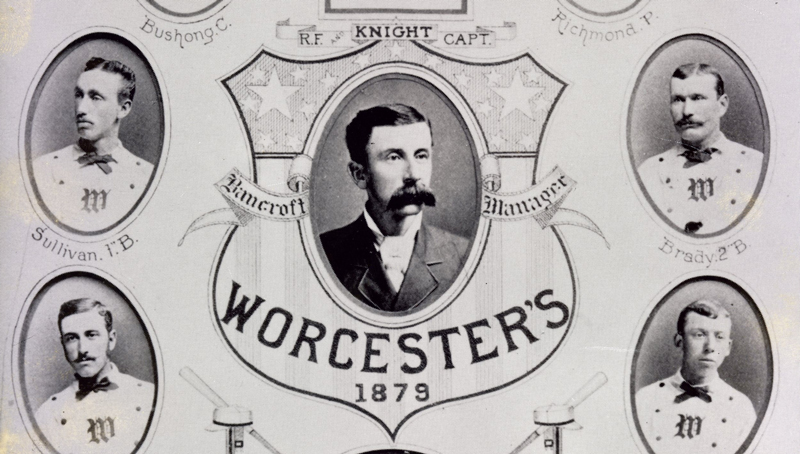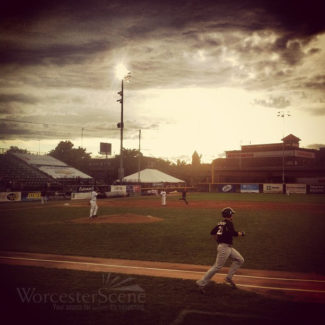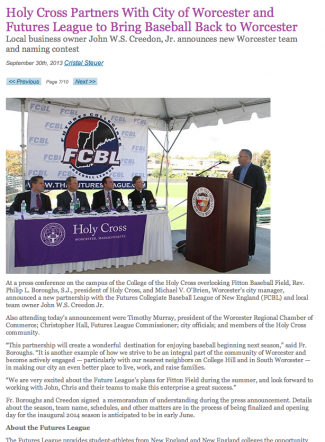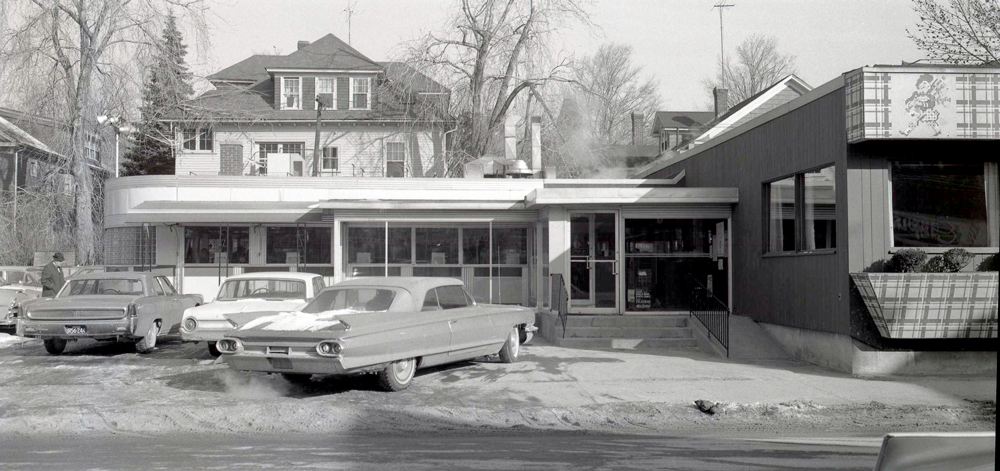
The lunch cart has been synonymous with controversy from the very beginning. At the turn of the century, business mogul, R.C. Taylor could be heard all over town damning the “infernal lunch carts” as the demise of Worcester’s economic development. “They make Worcester so cheap, nasty cheap…No other city on earth would stand the lunch cart nuisance but Worcester,” he told The Telegram, going on to say, “If we want to progress, keep up with the times and make business good, we’ll have to stop being a cheap city and stop being cheap men.” At the time, Taylor had no idea how vital the Worcester Lunch Car would become to his fair city.
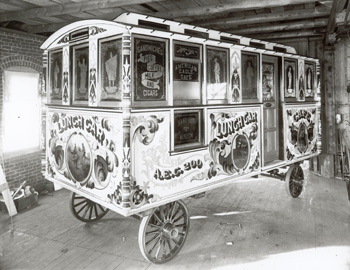
Photo by E.B. Luce, 1907 (Worcester Historical Museum) – This is the first lunch car built in 1907 by Worcester Lunch Car Company, Thomas H. Buckley founded by 1906. The diner was installed first nearby factories, at 69 Franklin Street, and later on Myrtle Street.
Beloved lunch cart operators like Cornelius O’Connell eventually felt the brunt of Taylor’s words. O’Connell, was forced to move on after 22 years from his post at Main and Thomas Streets when in 1926, traffic between 8 p.m. and 2:30 a.m. grew “apparently so thick that the problem [could] be solved only by the disappearance of ‘Con’s’ cart.” O’Connell was described by mourning news outlets as a “white haired, rosy cheeked philosopher” with “cheery eyes twinkling behind their golden rimmed spectacles.” His fans feared that accessibility to automobiles would mean the end of the lunch cart, but for Worcester, it was only the beginning.
Diners evolved from night lunch carts first manufactured in Worcester, Massachusetts by T. H. Buckley in 1890. A 1921 edition of The World’s Work named Buckley the original ‘lunch wagon king,’ deeming him “a scarcely appreciated genius who built the first really noteworthy wagon.” The Worcester Spy reported that Buckley’s famed White House Cafe had 36 syrup dispensers and a soda fountain constructed of Mexican onyx.
In 1906, the Worcester Lunch Car Company was born. Their sales materials described Worcester’s legendary lunch car as:
A smart looking business place that draws customers in and brings ‘em back because it’s as comfortable and modern as a streamlined parlor car…in short, if you’re looking for a money-maker and the best buy in the dining field today….Here it is: THE WORCESTER DINER!
In 1926, women gained access to the lunch cars, which were finally considered family friendly and no longer only suitable for late night crowds of men. By 1957, the WLCC had turned out 651 lunch cars that eventually found homes all over the world.
In 1961, the machinery, equipment and supplies of WLCC sold at auction. Jack Tubert reported that at 3:01 p.m. on May 14th, “Auctioneer Henry A. Berman flicked the ash from a cigar, drew a deep breath and announced, ‘the sale is over.’ The king was dead.”

It was true in a sense. By the late 1960’s, the fast food boom had put a vast number of American diners out of business. But, contrary to Tubert’s prediction, “the king” stood firm. Worcester’s factory workers kept the home of WLC true to its roots, continuing to patronize the city’s wide variety of diners. In 1974, four Clark University students published a booklet called “Living it Up in Worcester” that proudly stated, “Diners are not just places to eat. They are multimedia. Indigenously American art forms.” Diners are in Worcester’s DNA.
The Boulevard (No. #730) at 155 Shrewsbury Street gained national fame as a Worcester Lunch Car due to the signature barrel roof design that WLCC had become known for. In 1974, Richard J.S. Gutman and Peter Ames Richards of The New York Times paid the diner a visit, reporting, “The Boulevard is a gem that has not changed to any significant extent since it opened its doors in 1934.” They described owner John C. George as a “raconteur and cook” specializing in Worcester politics (and Italian cuisine.)
The Boulevard wasn’t the only diner that served as a political hub for the city. Jerry’s at 76 Green Street was known as the “Democratic Haven” by locals until 1983 when it turned its focus to the “average working man” under new ownership as Tony’s. Jerry Lavin had even been known to cater events for John F. Kennedy. The Telegram reported that as Jerry’s, “Congressman Joseph D. Early’s posters were like wallpaper in the diner,” and, “Presiding over everything was a portrait of John F. Kennedy.”
In 1984, WLCC No. 705 went out of business at its home in Rye, NH. Property owner, Henry Ciborowski donated the car to Preservation Worcester in 1985 and the organization raised $30,000 to restore it as an information booth on the Common downtown before being relocated to Cristoforo Colombo Park in 1996 as a ticket booth. Two years later, the car was severely damaged in a fire set by vandals. No. 705 found a new life in restoration, owned privately by Worcester family, the O’Connors.
By the 1990’s, restaurateurs in Europe took to shipping Worcester Lunch Cars overseas to serve up “authentic” American cuisine including malted shakes and burgers. Some of the original cars gave way to brick and mortar establishments. For example, The Sole Proprietor now stands where The Highlander Diner once thrived. But today, only a fraction of the original WLCC diners remain, a handful of which are still lucky enough to call Worcester home, including spots like Ralph’s Chadwick Square Diner and Miss Worcester.

Ralph’s Chadwick Square Diner (No. #660) was manufactured by WLCC in 1930. According to the National Register of Historic Places, this diner operated at at least three separate locations throughout the city before settling at 148 Grove Street. Ralph’s tile and wood finishes represent common interior design prior to the popular use of stainless steel. The space offers a full length marble counter with fifteen stools and a bar. A sign out front still reads, “Chadwick Square Diner and Tables for Ladies.” The diner was originally a popular spot to gather after big band dances, but these days Ralph’s is known for live music, burgers, and chili.
Miss Worcester (No. #812) was delivered to 300 Southbridge Street in 1948, to replace the Star Diner which stood at the same location prior to its arrival. Miss Worcester sits below the elevated tracks of the Providence & Worcester Railroad, directly across from the former Worcester Lunch Car Company’s factory where it was constructed. The design features original porcelain enamel wall panels in pale yellow with light blue detailing. Diners continue to prevail as an early morning option; Miss Worcester opens at 5 a.m. on weekdays and 6 a.m. on weekends.
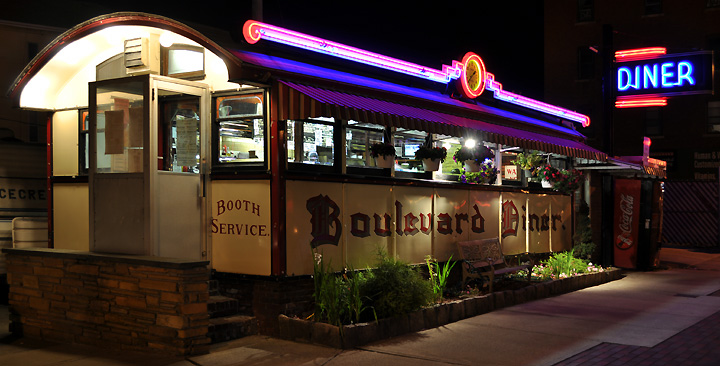
If anything can be learned from Worcester’s lunch car history, it’s a lesson about resilience. Aside from the gas explosions, multiple-alarm-fires, and acts of vandalism that have plagued Worcester’s lunch cars over the years, diners have also had to stand up to the shifting culinary landscape. The institutions which R.C. Taylor once saw as obstacles in the way of progress now stand as a reminder to embrace Worcester’s bones and breathe life into the treasures which make our city unlike any other. Long live the lunch wagon king!

